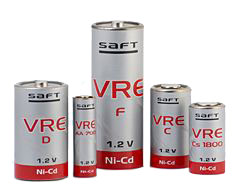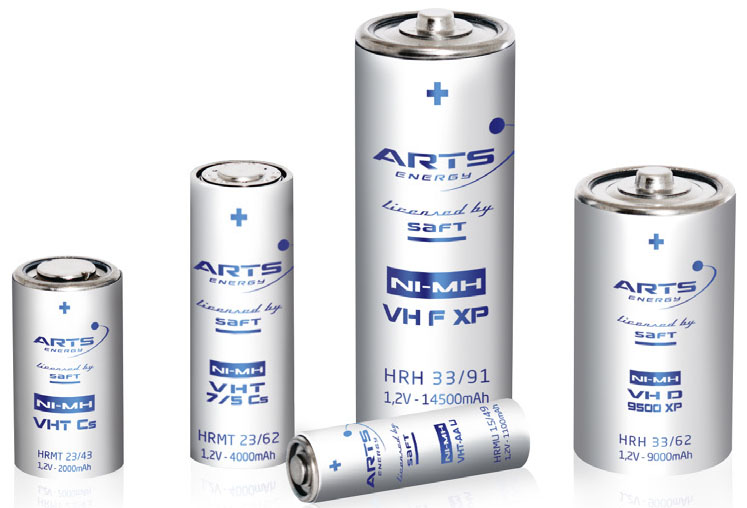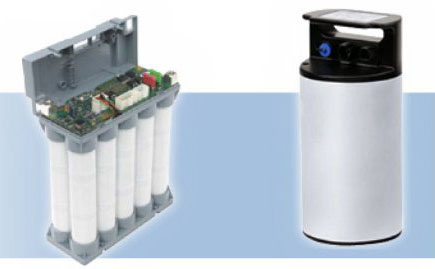NICKEL batteries
This is one of the primary technological alternatives to lead-acid batteries. It was necessary to wait for the 50s and 60s for improvements in techniques that meant that the Nickel-Cadmium battery could be widely used. A zero maintenance battery (sealed envelope), having a capacity superior to that of lead-acid batteries (+50%), it also has a longer life (number of cycles). It use by the general public is now banned because of its toxicity.
It was only at the beginning of the 90s that its "cousin", the Nickel-Metal-Hydride battery would appear. Non-toxic and having greatly improved storage capacities (+100% compared with lead-acid), it was to become and still is present in numerous business and general public applications.
The batteries consist of standard cylindrical elements of different sizes (AA, Cs, C, D, etc.) assembled in different ways (stick, side by side, triangle, etc.) terminated by a connector (solder, Faston, on a cable, etc.)
Nickel cadmium - Continuous ChargeNi-Cd technology is very amenable to continuous charging, so that it is available at any moment (UPS, emergency lighting, etc.). The VT and VNT series from Arts Energy (formerly Saft) are optimised for these applications, with a particular focus on temperature resistance, as the latter is often high in emergency lighting units. |
 |
|
Nickel Cadmium - Cycling
Another remarkable property of Ni-Cd technology is its ability to withstand deep discharges at sustained current, without compromising battery life (number of cycles). It is thanks to this that a number of mobile devices have seen the light of day. In these applications, Ni-Cd still has the highest cost/number of cycles ratio. |
 |
|
Nickel Metal HydrideThe Ni-MH technology was developed mainly to improve 3 aspects in comparison with Ni-Cd: to increase the storage capacity, eliminate the memory effect and have a more environmentally friendly battery. The Arts Energy VH and VHT series excel in these properties, while limiting adverse effects as much as possible (more limited currents, pseudo-permanent charge, lower tolerance to the discharged state). |
 |
|
Battery SystemsThe need for free-standing battery systems is becoming ever more widespread. These modules combine a certain number of cells assembled in series/parallel to provide the required voltages and capacities. They are managed by an intelligent controller that protects them and guarantees them an extended working life. |
 |
|



